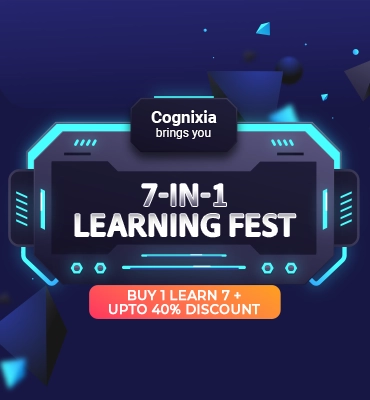
- Overview
- Schedule Classes
- What you'll learn
- Curriculum
- Feature
- FAQs

Overview
The Internet of Things Security Expert course is a 360° training program offered by Cognixia to professionals who seek to deepen their knowledge in the field of Internet of Things (IoT). The program is customized based on comprehensive knowledge about various IoT Security platforms. This program is designed by industry experts to provide hands-on training with tools that are used to speed up the training process.
The program is inclusive of full-fledged training, starting with Python and advanced IoT training to IoT security, all of which are found to be essential for IoT Security Experts. These modules together will provide a solid foundation and give a competitive edge in the learning process.
This course is specifically targeted to passionate professionals who are willing to get promoted to the next level within the IoT domain and have already gained expertise in the basic Python.
Who can take IoT Security Expert training?
This course is designed for tech-savvy individuals who seek in-depth knowledge of the field of Internet of Things. Moreover, it offers promising benefits to newcomers, experienced developers and architects, corporate IT professionals, engineers, and other professionals.
Schedule Classes
Looking for more sessions of this class?
What you'll learn
- Build, test, and deploy applications using Python
- Learn suitability of Python and use it to write device, gateway, and cloud-based applications and scripts
- Gain advanced-level knowledge to architect, build, and implement IoT projects from the selection of the right components to securing the ecosystem using relevant tools and technologies
- Build a security plan, extend security to peripheries, and gain familiarity with fundamental cryptographic algorithms needed to safeguard IoT systems
- Python: The objective of this module is to deliver a clear understanding of Python as a versatile and popular programming language. It will familiarize candidates with the basic and advanced features of Python. It covers an overview of Python, data types, functions, classes, modules, and libraries. The inherent scientific nature and a group of optimized scientific libraries make Python the best choice for IoT application development, especially IoT analytics.
- Advanced IoT Training and Certification: In this module, candidates will be taught architecting, designing, developing, deploying, and securing IoT ecosystems. Candidates will learn concepts of data, information, knowledge, Sensor Data acquisition, mining and analytics, and the evolution of automated systems into autonomous systems. This module will cover various real-life case studies and use cases like asset tracking, health monitoring using wearables, smart city application, and many more. The course has been structured to deliver expert-level knowledge of tools, technologies, and best practices to build and deploy the best-in-breed IoT solutions.
- IoT Security: This module is designed to educate candidates about various aspects of securing IoT devices. The candidates will learn about IoT architecture, practical attacks, threats and risks, practical hacking sessions, vulnerability disclosure, securing connected products, and many more interesting topics. It covers end-to-end deployment of security from devices to clouds using standard security frameworks.
